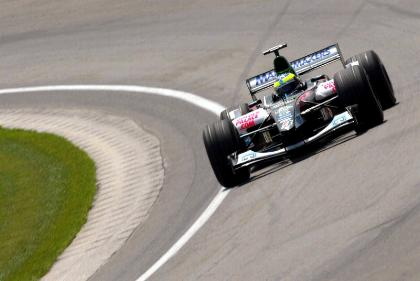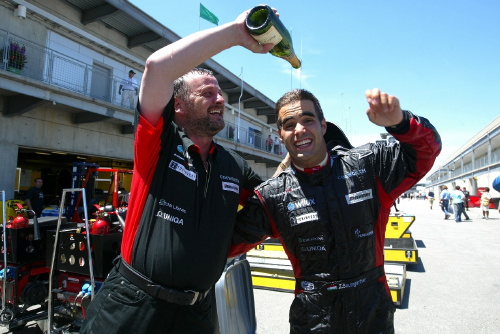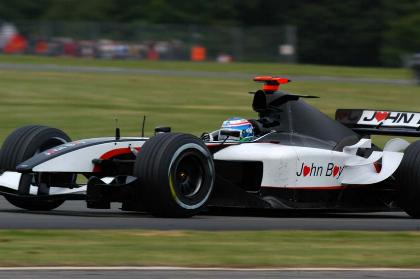2004 - Frustration on all levels...
Minardi found a new partner in the ruins of its Dutch episode in 2003, Dutch luxury bathroom appliance maker Wilux. Minardi also bought some of the remains of the Arrows factory. That team had gone bankrupt in 2003 and left a wealth in spares and F1 components. Minardi also held a comparative test session to establish differences between their car (PS03) and the Arrows (A23) which had used a similar engine. The Sergio Rinland designed Arrows had some aerodynamic features that seemed suitable to improve the Minardi.It was all-change behind the wheel, with Italy's Gianmaria "Gimmi" Bruni and Hungarian Zsolt Baumgartner.


Before making this decision, they had tested many up and coming drivers such as India's Narain Karthikeyan, Finland's Heikki Kovalainen and Austria's Norbert Siedler, coming to the conclusion that Bruni and Baumgartner were the best choice all options considered. Bruni had managed to impress as a test driver in 2003 by outpacing both regular Minardi drivers during the Friday test sessions. Baumgartner had already made his debut with Jordan by replacing Ralf Firman for two races. The 2004 car was little changed from the 2003 car, which in itself had been very similar to the 2002 entry.
Small changes were made to aerodynamic parts of the car (especially floor, diffuser and front wing, as well as the required alterations to the engine cover and rear wing). Minardi also used the same 72-degree, Cosworth CR3 V10, in 'L' (long-distance) specification to comply with new regulations. In a nutshell: It wasn't the package that would compete for the 2004 title.Even the Jordans of Nick Heidfeld and Giorgio Pantano were at times more than a second ahead of the Minardi car and it was especially Bruni who grew frustrated by this lack of pace.
One rare highlight of the 2004 season was Baumgartner, who finished 11 out of 18 races, taking a point by coming in 8th at Indianapolis. It did not matter that he was three laps down and the last of the finishers, it sent Minardi fans around the world jumping with joy. His ability to keep the car going in a race that saw many others drop out, gave Minardi its first point since Mark Webber's heroic drive at Albert Park in 2002.
The darkest hour of the season came on the 9th of July, when its Sporting Director John Walton suffered a heart attack and died. In honour of its late team member, Minardi decided to remove all sponsor logos from the car for the British GP and replace them with the words "John Boy". This sparked a major row with main sponsors Wilux which had been selling on their advertising space to other companies. Wilux and Minardi mutually decided to terminate the contract and the advertising space on the side pods was passed on to Paul Stoddart's fledgling airline Ozjet and Swiss company Connect.

Paul Stoddart continued to be the most outspoken critic of the way Formula 1 was managed and was caught up in intense discussions with FIA boss Max Mosley and Bernie Ecclestone about the future of the sport. While Minardi had maintained a reputation of "show up and shut up" throughout its history, the outspoken Australian was keen to fight for the team's survival.